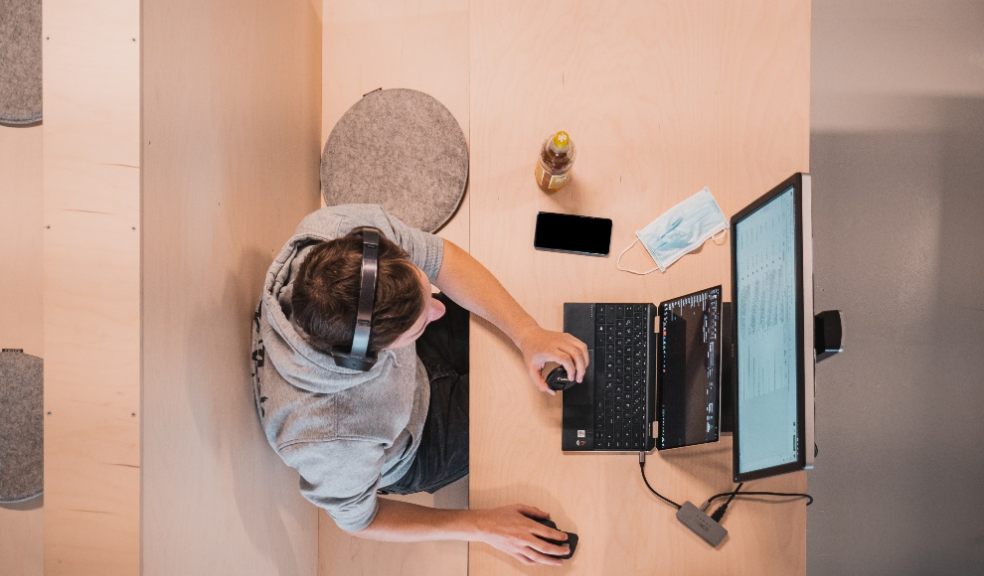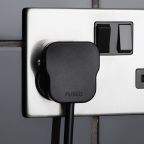
Four yoga positions workers can do at their desk to relieve stress
Over 380,000 people in the UK reportedly practice yoga weekly, and with it proven to reduce anxiety and improve overall health, it is clearly an exercise that many people are finding success with. But with Stress Awareness month now upon us, how can yoga positively impact work-related stress?
Reebok has compiled a list of the best yoga positions you can do at your desk to reduce stress and spoken to experts as to why these will benefit you.
Georgia Beaven, a yoga teacher and mental wellbeing advocate outlines how “studies have proven that yoga reduces stress, improves mood, and can help you sleep.” Alex Manos, yoga teacher & specialist in musculoskeletal physiotherapy expands on this saying it “can have a big impact on reducing stress, anxiety and can help with being more mindful in day to day activities.”
So what positions should workers practice at their desk to gain the most from yoga and reduce work-related stress?
Deep belly breathing
Deep belly breathing is effective in reducing stress and anxieties as you are forcing air to move deeper into your stomach. Simply sit on your chair in a comfortable position and place one hand on your chest and the other just below your ribcage so you can feel your diaphragm.
Slowly inhale through your nose for four seconds, your stomach should rise as it fills with air, hold it there for seven seconds, then exhale through your mouth for eight. This is called the 4-7-8 method and is the best way to control your breath and reduce overall stress. As you breathe out you can make a conscious effort to make your breath audible so you feel like you are physically getting rid of stresses and anxieties from your body.
Finger and wrist stretches
For many people, they are sitting at a desk typing on a laptop for the majority of their working day, which can put added strain and pressure on our joints and increase the chance of injury and pain. Whilst many yoga positions for wrists and fingers need to be performed away from a desk, there are various ways that people can improve their mobility using variations of yoga positions. The most simple, effective way to do this is to keep a ball on your desk and spend 30 seconds per day squeezing it - this will strengthen your wrist and finger joints and improve circulation.
Whilst seated, workers can also do figure eights. Place your palms together at your chest and interlock your fingers. Keep your elbows tucked by your sides and move your wrists in a figure eight motion. Do this for 15-30 seconds. Follow this with a seated upreach stretch - face your palms to the ceiling, with fingers still interlocked, and stretch up, make a conscious effort to try and lengthen your spine as much as possible.
Neck stretches
Neck stretches are a good exercise for people who are sat at a desk for copious amounts of time throughout the working day. With stress and anxiety previously found to be linked to neck pain, it is proven that work-related worries can cause a buildup of tension in these areas. To reduce this, carefully straighten your spine by putting your chin to your chest and gently roll your head from side to side so that it goes to both shoulders.
You can also place your head on each shoulder and use the same hand to carefully stretch your neck into your body. Place your palm on the ear that is exposed and gently pull down. This will provide a deeper stretch for your neck so be careful not to pull too much.
Seated child’s pose
Child’s pose is the UK’s most popular yoga position with over 5,400 searches being made every month. Eloise Skinner, teacher, therapist and founder of The Purpose Workshop, says this pose “is an opportunity to stretch the spine and hips, as well as relaxing the head, neck and lower back.” But how can you do this at your desk?
Make yourself comfortable within your chair and bend over your legs until your hands are on the floor. Do this slowly to reduce the chance of injury or strain. If you are unable to reach the floor, or it is painful, get yourself a cushion and place this on your legs. Hold the pose for 30 seconds to a minute, practicing deep breathing whilst you are doing it. This will alleviate any tension within the body and reduce overall stress.
Whilst these poses are short, Whitney Whetten, founder, director and teacher of Yoga Art Space says “just 5-10 minutes of stretching your body will help you feel good. It doesn't take much space to be able to practice.” Yoga is a practice that is personal to the individual, but with it proven to positively impact many people, it should be practiced within the workplace to reduce any worries or stresses that workers may be placed under.













